The Many Faces Of VTOL Designs
I’m very interested in simplifying the mechanics of helicopter design and their safety factors, most specifically, coaxial helicopter designs and their simplistic nature. I’ve done a lot of historical research on autogiro and helicopter design concept development, and have thus concluded that the coaxial design has some most favorable attributes.
The Sikorsky “XH-59A or S-69” coaxial helicopter design of 1978 is a design point in favor. It was once thought to be the fastest (compound) helicopter ever built, capable of 322 MPH; using a 36-foot rigid (ABC) advanced blade concept rotor system.
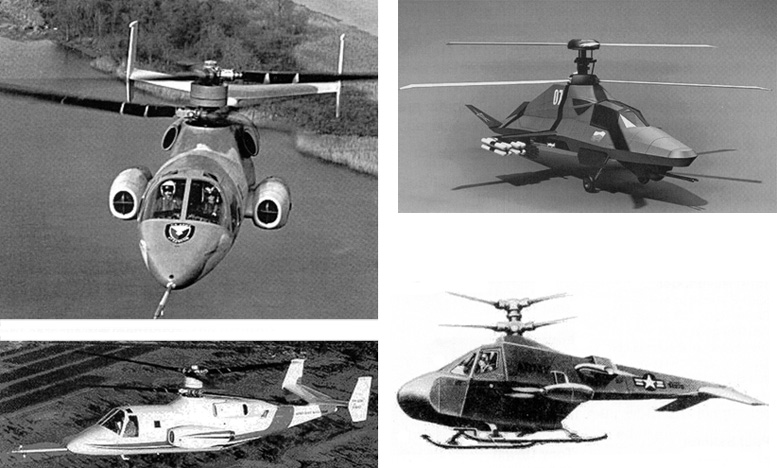
LEFT: July 29, 1973 Sikorsky S-69 ABC (XH-59) (Advanced Blade Concept) Coaxial/Compound Helicopter.
TOP RIGHT: 2002: Kamov Ka-58 Russian Stealth Attack Helicopter “The Black Phantom”.
There were problems with vibrations, transmission and engine control that eventually could have been remedied! Combining the Westland Helicopter U.K. “swept back blade tip design” with the Sikorsky S-69 overall coaxial design would make for a great non-conventional helicopter!
Sikorsky’s X2 Technology™ demonstrator “Visualizing the impossible as possible” “Ordinary people believe only in the possible. Extraordinary people visualize not what is possible or probable, but rather what is impossible. And by visualizing the impossible, they begin to see it as possible.”
Stan Hiller was on the right track back in his “XH-44 and UH-4” coaxial helicopter design rigid rotor system 1940’s days! I admire Mr. Hiller greatly, for he did not follow the “calf-path” design methodology, he explored all rotor system design concepts for himself (the Sikorsky S-69 rigid-rotor design is proof of Hiller’s success).
The Russian Kamov Coaxial Helicopter models are the only present coaxial helicopters in world existence! I make an analogy, I think of the Kamov like the Russian AK-47 rifle, they’re both design built for reliability, rigidity and overall less maintenance!
I’ve started an archive of every coaxial helicopter design ever built through flying prototype and have designed an experimental coaxial helicopter of my own. The following are just a few examples of the coaxial designs found in my archives.
The ABC (Advancing Blade Concept) was designed to prove the viability of two counter rotating main rotors on a common axis as a means of achieving higher speeds and better agility. Its simple design eliminates the tail rotor for anti-torque and directional control. Rudders in the twin tail are used instead, as in a fixed-wing aircraft.
The concept also offers lower operating and maintenance costs. The ABC has been extensively flight tested as a pure helicopter and, with auxiliary propulsion, flown at speeds in excess of 480 km/h. This system had the additional advantage of eliminating noise caused by the tail rotor and its transmission (XH-59A Serial Number 73-21942).
Compound helicopters were designed and developed to increase helicopter forward speed. They pay for the higher speed in a decrease in vertical take-off and hovering capability, since the wing interferes with the airflow through the rotor; then, too, the added weight of its structure reduces the payload capabilities.
The tilt-prop designs were another step forward on the increase speed scale; the large models were capable of 300 to 400 mph. This system proved inferior to both the helicopter and compound helicopter in vertical take-off and in hovering ability; their propellers were not as an efficient rotor system.
Control in hovering flight was not as good and payload that could be lifted vertically was much less (for the same power) than with a helicopter. Also, the vertical take-off of the tilt-prop designs was more of a strain on the engines than that of a helicopter.

LEFT: The Sikorsky X2 demonstrator will feature a coaxial design (two rotors on the same axis) and a ‘pusher prop’ to supply auxiliary propulsion that will enable the aircraft to reach high speeds of 250 knots.
RIGHT: 1999 – “Moskvichka” Kamov KA-115.
VTOL aircraft are not as safe as true helicopters due to not having autorotational capabilities in an engine failure; these aircraft are completely dependent on their engines for vertical and horizontal vented thrust.
Advantages of coaxial over conventional helicopter designs:
-
Excellent maneuverability.
-
Good ground clearance.
-
Better lifting capability per main rotor diameters than single rotor configurations (approximately 1.65% greater increase per given rotor
diameter). -
As vertical separation of the coaxial rotors increase (between 10 to 25%, right at 17.5% of one rotor radius), they approach the power efficiency of an isolated single rotor configuration in forward flight. At 10% or less of the rotor radius vertical rotor separation, a 1.41% increase in induced power is required.
As rotor separation approaches or reaches 25% of rotor radius, the harder the lower rotor has to work to develop and maintain its share of rotor thrust. “Vertical separation of rotor wakes determines efficiency”.
-
Coaxial configuration helicopters also avoid the tendency of the single rotor helicopter to roll during high-speed flight.
A rotor’s advancing blades combine their rotational speed with the helicopter’s forward airspeed to produce increased lift on one side of the rotor; the retreat ing blade, in contrast, subtract their rotational speed from the helicopter’s forward airspeed and produce less lift.
The resulting asymmetrical lift at high speed produces roll forces that increase with forward airspeed. Coaxial helicopters whose rotors turn simultaneously in opposite directions, in contrast, present an equal number of advancing and retreating blades on each side, thereby neatly avoiding this problem.
-
Coaxial helicopters utilize all their power to generate lift and directional or forward thrust, instead of 15 – 20% power loss due to power required for anti-torque tail rotors.
-
Coaxial helicopters require less maintenance and weigh less due to having a shorter tail section, no tail rotor: drive system, gear box, collective or its control system.
-
Coaxials are easier to control in high crosswind or tail wind conditions due to their balanced main rotor torque and shorter tail sections. Conventional helicopters, due to their long tail sections, tend to wind vane and can run out of positive tail rotor pedal for anti-torque yaw control.
-
Coaxials are safer; there’s no chance of yaw or directional control loss due to tail rotor failure or possible tail rotor mishaps, U.S. FAA, NTSB data and U.S. Army studies have shown as much as 21% of all accidents are due to tail rotor strikes and loss of tail rotor effectiveness.
-
Coaxial helicopter are a more compact design due to the smaller length tail sections based on the radius of smaller diameter rotor disc requirements and…
-
Coaxial designs also offer a greater (eg) center of gravity payload range.
Note: Past coaxial helicopter designs, especially of the 40’s lacked development of vertical/rudder tail fins for aid to differential collective for lateral (OGE & IGE) yaw control and a horizontal/elevator for aid to cyclic pitch control at cruise speeds.
In place of differential collective, the use of a braking system to engage either one or the other of the concentric rotor shafts to offset rotor torque for yaw control needs further design exploring. Both aided systems for yaw and pitch control, I employ in my coaxial helicopter design.
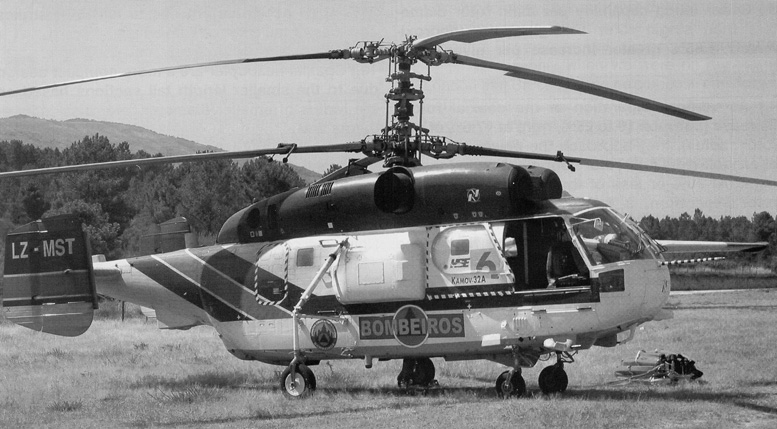
1990: Kamov Multi-Role Ka-32A.
VIDEO: Top 10 coaxial ultralight helicopter
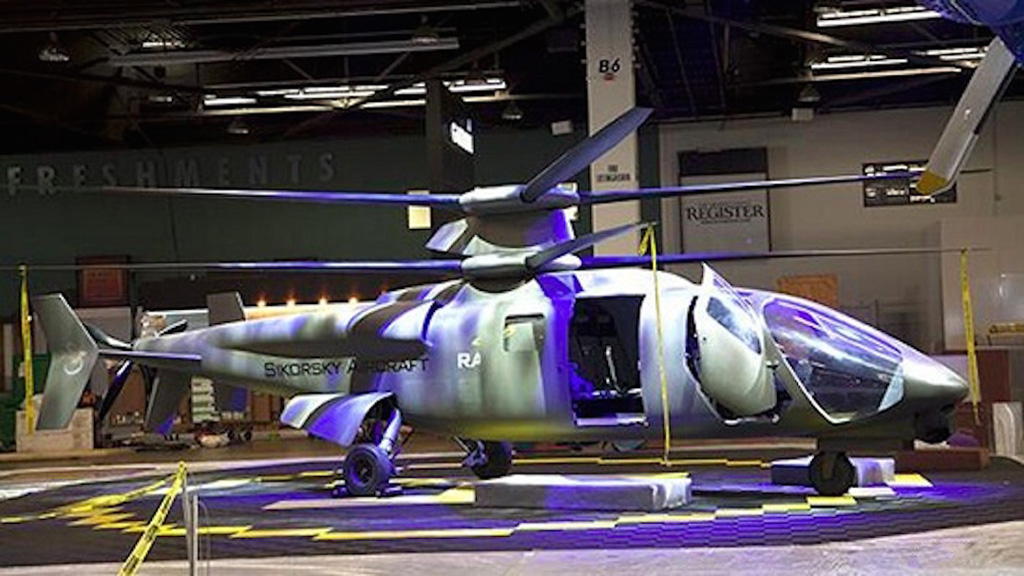

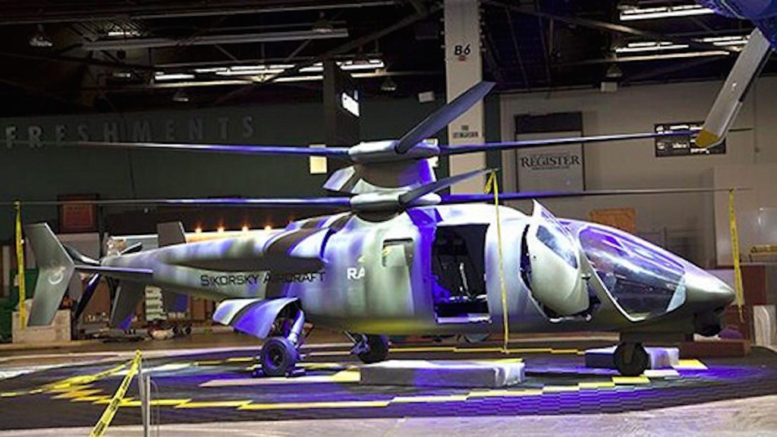
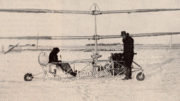
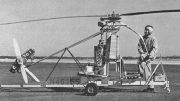

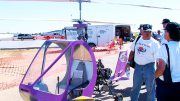
Be the first to comment on "Coaxial vs Conventional Helicopter & Tilt-prop VTOL Aircraft Designs"